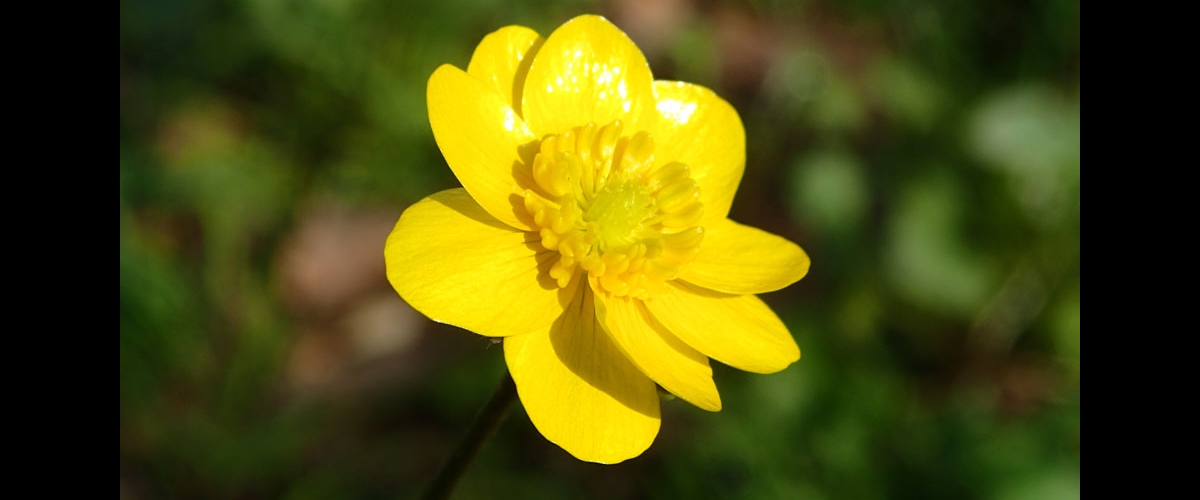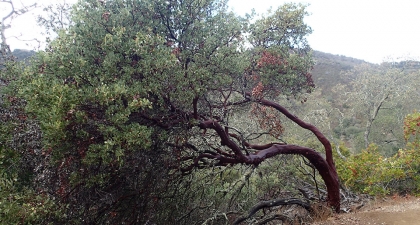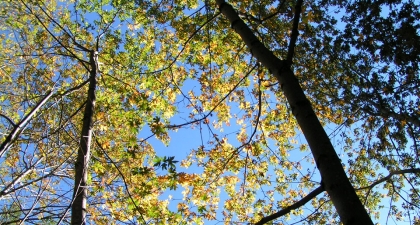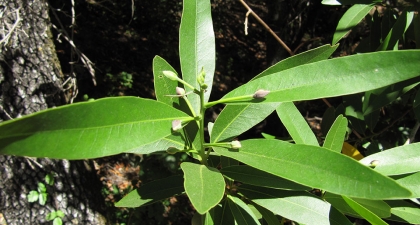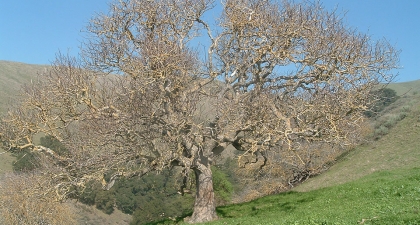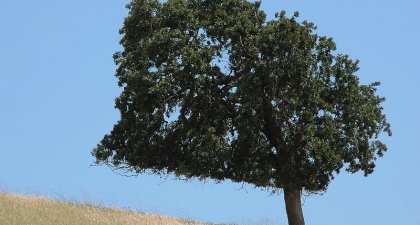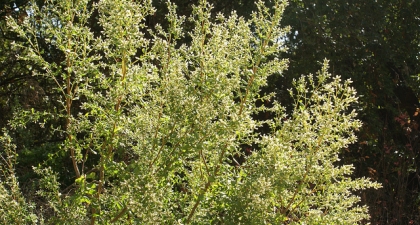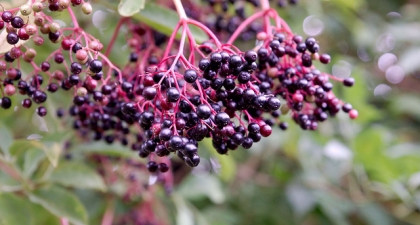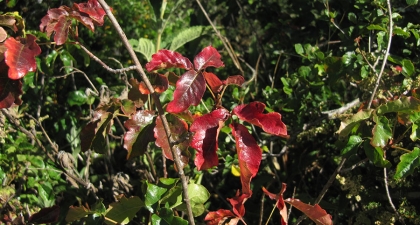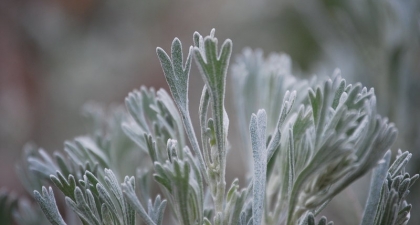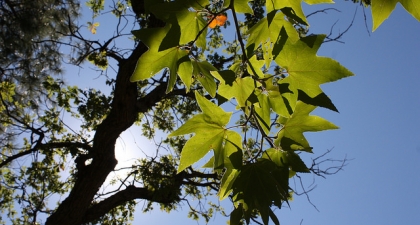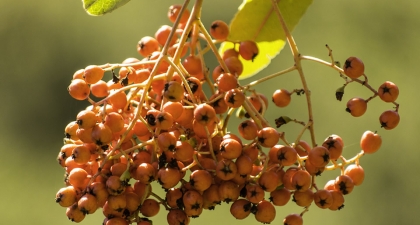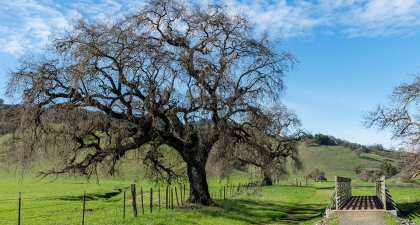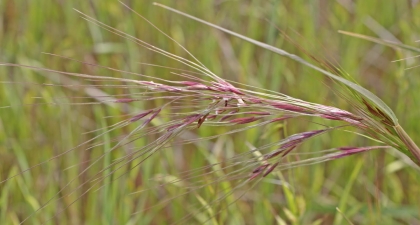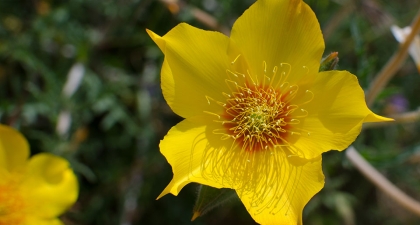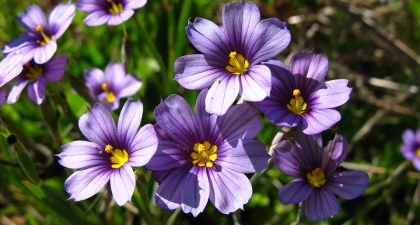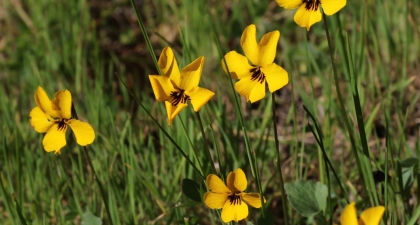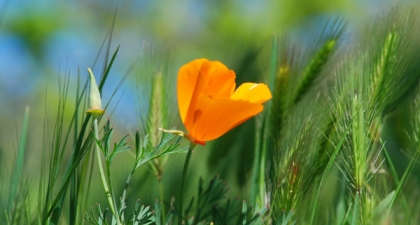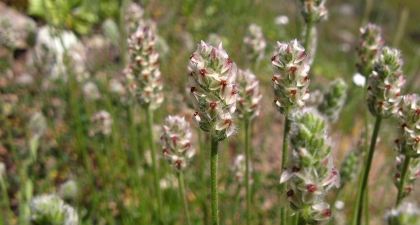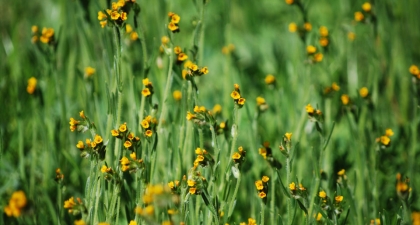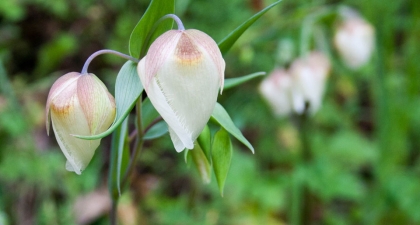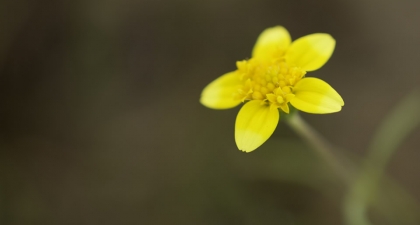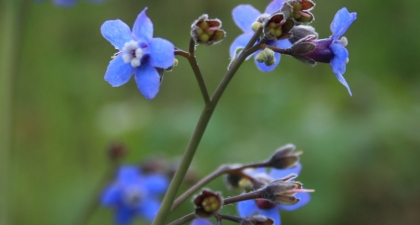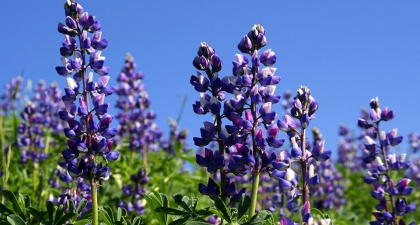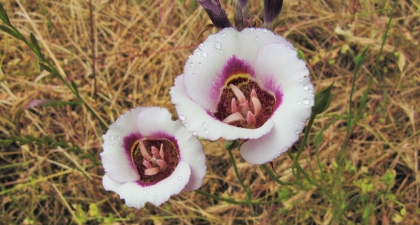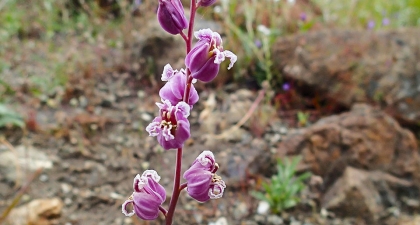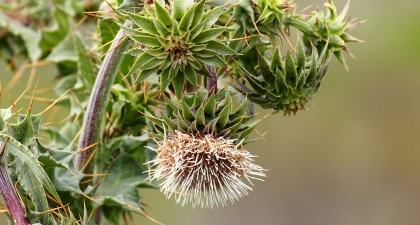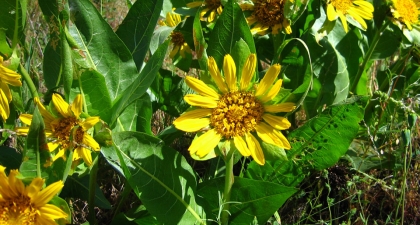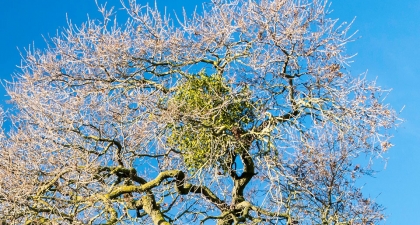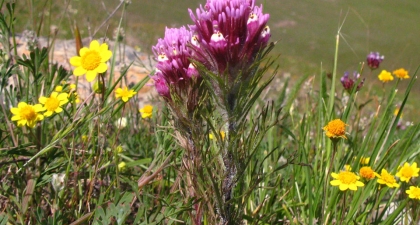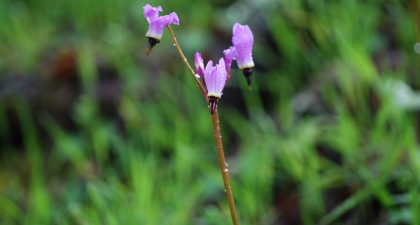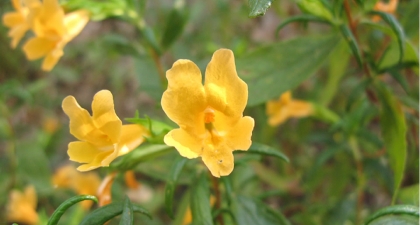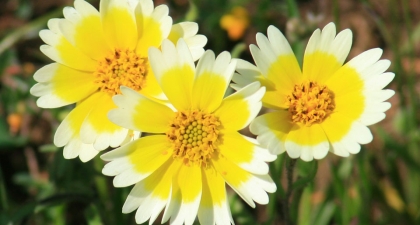Blazing star is a cheerful-looking wildflower that blooms in late spring. It grows well along rocky outcroppings, such as along the trails in Sierra Vista Open Space Preserve. Its flowers consist of five bright yellow petals surrounding centers full of stamen. One plant can grow up to a little over a foot tall and produce many flowers, which open in the afternoon sun.
Blue-eyed grass grows throughout California. This plant produces flowers from January to July, but the best time to find them is March through May. Its small, 1-inch flowers have six blueish-purple petals and a yellow center. As the name suggests, blue-eyed grass has thin, grass-like leaves, but is technically not a grass species. It grows well in moisture and can be found in open, grassy areas as well as woodlands.
California golden violets, also known as “Johnny jump-ups" or “yellow pansies,” are low-growing wildflowers with heart-shaped yellow petals. You can find them on open, grassy slopes, meadows, and oak woodlands - they grow in clumps or colonies.
The bright orange or yellow blooms of the California poppy are one of the first signs of spring in the Santa Clara Valley. It beat out the mariposa lily and the Matilija poppy, to become the state flower in 1903. California poppies are found in a variety of sun-exposed, grassy habitats throughout the western United States including in Coyote Ridge and Rancho Cañada del Oro open space preserves. The petals (there are four) close at night or on cloudy days. Early Spanish travelers called the plant “copa del ora” or “cup of gold.” When it was introduced in other countries with similar, Mediterranean climates such as Chile and Australia, California poppies spread widely.
The dwarf plantain is a small herb with white-clustered flowers on the end of a short, light green stalk. It grows well in serpentine, sandy, and clay soils as well as on hillsides and in meadows. The dwarf plantain is especially important as the host plant of the threatened Bay checkerspot butterfly. You can find them in Coyote Ridge, Coyote Valley, and Rancho Cañada Del Oro open space preserves in the spring months.
The fiddleneck is a member of the forget-me-not (or Boraginaceae) family. Each flowering stalk ends in a curly whorl of yellow-orange flowers that resembles the head of a violin or fiddle - giving it the name of fiddleneck! The fiddleneck has a bit of a complicated reputation; the rapid growth of this wildflower can cause problems for livestock and agriculture, earning its other name of “rancher’s fireweed.” However, this native flower is important for many birds, butterflies, bees, and other insects.
The globe lily is an enchanting flower with delicate, nodding blossoms that range in color from pearly white to deep pink, with greenish tinges. You can find globe lilies in the shady woodlands of your open space preserves - look for these magical flowers before they go dormant for the summer!
Lasthenia californica, or goldfields, earned its name by blanketing open spaces with a sea of its bright, buttery yellow flowers. Blooms usually peak from March to May. Goldfields can thrive in poor soils, including on the serpentine soils found in Coyote Ridge Open Space Preserve and along spring pools in the Sacramento Valley. It has reddish stems and the flowers extend 3 to 7 inches high. Goldfields can be pollinated by insects, including small flies and by native bees. Like many other native plants, goldfields faces threats from invasive species, development, and climate change: its splashy blooms depends on ample winter rains.
Houndstongue is a shade-loving species of wildflower named for its broad, tongue-shaped leaves. Each of its flowers has five bright blue petals surrounding a distinct white ring. You can find this member of the forget-me-not family in shady woodlands.
Lupine, a spring wildflower, is present in all of Santa Clara Valley Open Space Authority’s preserves. As an annual, it blooms in March or April and is often found in extensive patches, mixed with other flowers and grasses. Each shoot sporting purple blossoms can extend 9 or more inches high. Each blossom has a white splotch, which directs insects — and hummingbirds — to the pollen. It is found in grasslands and chaparral (shrubs) landscapes along California’s coast range and the Sierra foothills, as well as in parts of Oregon and Nevada, although related species of lupine are found throughout the western United States.
The mariposa lily is a bell-shaped flower with curved petals and intricate patterns. Mariposa means “butterfly” in Spanish – perhaps in reference to this flower’s wing-shaped petals with patterns that resemble a butterfly’s markings. There are over 60 species of mariposa lilies worldwide, with over 50 that are native to California (including the butterfly mariposa lily, yellow mariposa lily, and clay mariposa lily). Insects and other pollinators love these flowers! You can usually find small beetles or other bugs hanging out in mariposa lilies.
The most beautiful jewelflower is a rare species of wildflower only found in California. These plants are thin and pale green with bristly bases and able to grow up to 3 feet tall. The white and lavender urn-shaped flowers alternate every inch from the end of the stem and have frilly-edged petals. The jewelflower’s adaptation to serpentine soils means you may be lucky enough to find it in Coyote Ridge or Rancho Cañada del Oro open space preserves, blooming from April through June.
The Mount Hamilton thistle is a very rare plant found only in a few areas of California, including the Santa Clara Valley. It grows in moist, serpentine soil, especially near streams, springs of water, and other wet areas. Like other thistle varieties, this plant has a thick, upright stem and has spiny-lobed or toothed leaves. The Mount Hamilton thistle’s white flowers have many thin petals and are perpetually nodding forward on their stalks. Its phyllaries, the leaf-like structures below the flower heads, are large and curved backwards. The Mount Hamilton thistle blooms from March through October.
This native flower gets its name from the large leaves that resemble the ears of a mule. Mule ears belong to the Asteraceae family, along with sunflowers, daisies, tidy tips, dandelions, and most thistles. Native animals LOVE mule ears. Pollinators are attracted to the flower heads, and the large, nutritious seeds are eaten by birds, burrowing rodents, and insects. Look for them in sunny meadows and at the edges of woodlands. Like most flowers in Asteraceae, they love the sun!
The native Pacific mistletoe, also known as oak mistletoe, is a semi-parasitic plant. While it can photosynthesize like a normal plant, it has no true ground roots. Instead, mistletoe relies on attaching itself to another plant with tube-like “roots” that it uses to take the host plant’s mineral nutrients and water for itself. This causes the host plant to stop growing, eventually killing it. While it may seem as though mistletoe only exists to harm the environment, this plant provides many benefits. Its white berries are an important food source for some wildlife, and many species of birds and small mammals use its mass of branches to hide and nest in.
Contrary to its name, purple owl’s clover is not a clover at all, but a species of paintbrush flower! If you look closely, its clusters of blossoms give the appearance of a paintbrush. The origin of the name is unclear, but it may refer to what looks like little owls peering from the leaves of a tree. Purple owl’s clover grows in grasslands, openings in chapparal & woodlands, and occasionally desert areas.
The shooting star is a unique-looking wildflower with dainty, comet-shaped blossoms of white, purple, or deep magenta. Shooting stars are also called "sailor caps," "mad violets," and "mosquito bills.” They grow in grassy areas and open woodlands.
This perennial shrub is found from southern Oregon throughout California’s coast range and Sierra foothills, south into Mexico, and can be spotted in Rancho Cañada del Oro Open Space Preserve. Between April and June, pale orange flowers appear. Look closely and you might spot the “monkey” face that gives the plant its name. The leaves exude a gummy resin thought to protect them from hungry caterpillars, although it is still a host plant for some checkerspot and buckeye butterflies. The blossoms attract hummingbirds, bees, and other insects.
Tidy tips are a sunny variety of wildflower found in Santa Clara Valley’s open grasslands and bright hillsides. You can recognize this flower by its bright yellow petals with distinct white tips - where it gets its name. This member of the sunflower family is an important nectar plant for endangered Bay checkerspot butterflies.
